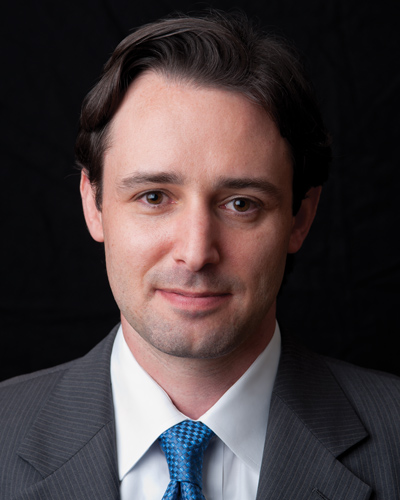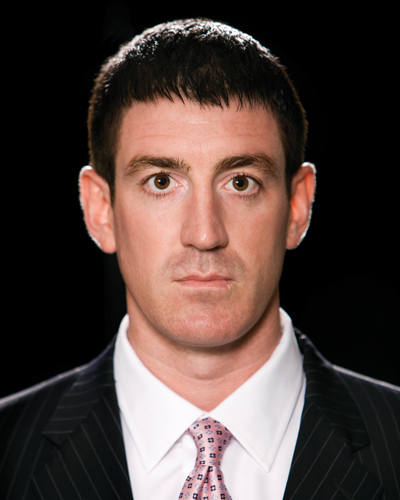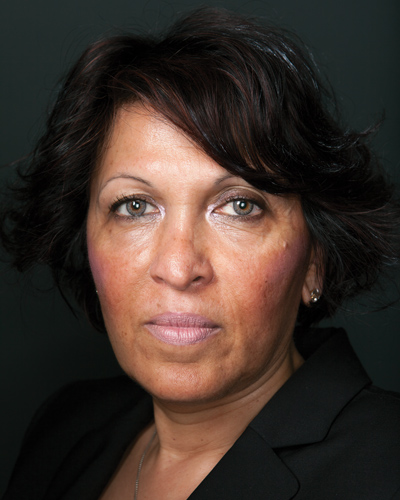David Goldfarb
President, DSG Benefits Group, Dallas

Much of David Goldfarb's business is based on consumer-driven health plans with a large focus on health savings accounts. Too often, employees don't truly understand how their benefits work. While these employees might be enrolled in their employers' plans, they're not taking full advantage of what their benefits can offer, says the president of DSG Benefits Group in Dallas.
“Employee benefits are an organization's second largest expenditure behind payroll,” Goldfarb says. “It's a big, big ticket item. Depending on the type or size of the group, it can be a six- to nine-figure expenditure, and you don't want to be spending that much if the employees don't even understand the benefits, don't appreciate the benefits and don't know how to use the benefits.”
Considering the lack of employees' understanding of their benefits, Goldfarb believes health savings accounts are helpful because they require employees to become involved with their own health care decisions. HSAs require employees to make conscience consumer decisions regarding their health care, which encourages them to do more research and compare prices.
“If I have to pay the first $3,000, I'm going to do a lot more shopping around,” Goldfarb says. “Even with prescriptions, I'm going to look at generics or ask for samples. Think about when you're buying a TV. There aren't a lot of people who just walk into Best Buy and buy a $5,000 plasma TV on the spot.”
When an HSA is paired with a wellness program that focuses on potential risk factors, it is even more effective, Goldfarb says. Often, it's difficult to determine the return on investment when it comes to wellness programs. An employer can implement fitness challenges and bring in personal trainers, but that doesn't help the employer understand where the immediate risk factors are.
“If you see your 500- or 1,000-person group has a bunch of potential diabetics or potential obesity problems, you can put together wellness programs that specifically address those issues. You can determine the risk factors through biometric screenings or a simple health risk assessment, which costs nothing. Use the data to build a plan that is all about prevention because 70 percent of chronic diseases are preventable.”
To provide value to his clients, Goldfarb is dedicated to staying on top of the industry's latest news, particularly when it comes to health care reform. Both employers and employees struggle to keep up with the ongoing changes that have come with health care reform, and they need their brokers to guide them through this revolving regulatory environment.
“Every company is different,” he says. “More so than ever, you really need to know what you're doing, and you need to have a very strong understanding of implications of the Affordable Care Act. Obviously, there are some unknowns, but in order to give good advice, you really need to be following things on a daily basis.”
Photo by Jim Olvera
Joe Milano
Area vice president, Gallagher Benefit Services, Itasca, Ill.

Effective communication is especially important as a broker when it comes to employee engagement, Milano says. Employees often remain hesitant to buy into their employers' benefits strategies, and brokers have to be ready to help them better understand their plans in order to find a sustainable solution.
“There's an inherent distrust in the employee-to-employer relationship,” Milano says. “We try to impress upon our clients that if you develop a trust with your employees and share in both the good and bad times, you're going to have a more engaged work force, which will help grow your business.”
When creating a communication strategy, Milano includes multiple methods. Email is great for some people, but others might learn better through face-to-face meetings. Learning styles range from individual to individual, and it takes more than one communication strategy to reach an entire employee population.
“You have to attack communication in every way you can,” Milano says. “Everyone learns differently and takes in information differently. There's no one way that works for everybody.”
To get employees engaged in their own health, Milano says he finds premium differentials seem to work best for his clients. Rather than continuing to follow poor health habits, premium differentials incentivize good behavior with monetary rewards, which can be especially appealing in today's economy.
“Just changing plan designs doesn't work,” he says. “It might shift the cost, but it doesn't shift the cost of care because employees are still getting sick and not taking care of themselves, so we're trying to affect behavior.”
When creating plan designs, it's important brokers help clients see what the environment could look like in the near future, Milano says. Questions might still loom, but it's the broker's job to help clients determine the best path to sustainability.
“If you don't have a plan in place and make your plan agile enough that you can move it as things change in your business, you're not going to succeed,” Milano says. “I try to really paint the picture for what the future could look like for my clients—with and without changes. You have to have the dialogue that looks at the bigger picture several years down the road.”
Photo by Colin Lenton
Brandon Scarborough
Co-founder, Power Group Cos., Overland Park, Kan.

When it comes to enrollment, Brandon Scarborough, co-founder of Power Group worksite division and PowerEnroll at Power Group Cos. in Overland Park, Kan., has his hands full. Much of Scarborough's time is spent setting up the enrollment, working with the carriers and implementing the proper technology. Despite his many responsibilities, ensuring enrollment conditions are just right for employees is the most difficult aspect of his job but critical to engagement, he says.
“Getting people to call in and enroll in their benefits is an extreme challenge,” Scarborough says. “You need buy-in from the employers, and you have to have strong communication so the employees understand what's being offered. It's your job as a broker to make sure those conditions are right.”
Voluntary benefits are also a large component of Scarborough's business, and he sees the various ancillary products as an area that's undergoing growth in the industry. With the health care exchange system scheduled to take effect in 2014, Scarborough believes more employers will look at voluntary benefits as another option.
“With the health care exchanges and everything that's going on with health care reform, voluntary benefits are going to be a much bigger part of an employer's overall benefit package,” he says. “They are going to be much more important than they were. Voluntary benefits are still important now, but I think there's going to be a much bigger focus on them going forward, just because of what the exchanges are going to bring up. Right now is the time to be in the voluntary industry.”
In Scarborough's experience, group worksite voluntary products, including accident policies and critical illness insurance, are becoming especially popular. When worksite voluntary products first hit the scene, they emerged as individual policies, but more carriers are beginning to offer them as a group plan.
“Accident policies and critical illness are the big buzz in the industry right now because they're the newest products and people are moving toward group critical illness, which makes it to where you don't have to get licensed in every state to be able to enroll it,” Scarborough says. “So those have been pretty popular.”
For Scarborough, the appeal of the benefits industry centers on the opportunity to help a wide range of clients. Whether a group is small or large, Scarborough can help that client find a plan that fits best for its unique needs.
“I love the flexibility and being able to work in any industry that you want,” Scarborough says. “Everybody is a potential client to me. I like the fact that I can go out and find any size or any industry can go out and be a potential client. It's just your job to go out and make them your client and make the sale.”
Photo by Austin Walsh
Rina Tikia
President, Tikia Consulting, Metairie, La.

“To be successful in this profession, you have to be very dedicated and have a good attitude,” Tikia says. “I'm available 24-7. I have never lost a client due to poor service.”
Of course, considering the ever-changing benefits environment, Tikia strives to stay current on all regulations and industry news. While there always seems to be a learning curve, brokers can't afford to become complacent when it comes to knowledge, she says. Employers still have a lot of questions surrounding benefits in relation to health reform, and they rely upon their brokers to design the most effective plan that is compliant with all current regulations.
“You can never say you know it all because it's constantly changing,” Tikia says. “There's never a dull moment, but you have to stay on top of the industry. I'm always trying to learn more, and one of my biggest strengths is I'm very creative. I always think outside the box.”
Part of Tikia's creative approach includes incorporating self-funded plans, even for smaller employers, she says. In particular, adding dental offerings to the self-funded plans has been helpful for Tikia's clients. Unlike medical claims, dental claims are never catastrophic in nature, which makes it affordable for employers, and including that extra benefit is attractive to employees.
“Self-funding not only helps the employer reduce its costs because you're only paying as you go, but it's also a good offset to employees in terms of a benefits package,” Tikia says. “You'll never have a million-dollar claim in dental.”
Although the future of health reform is still unknown, Tikia remains positive about the future. Traditional health care might be changing, but she says there are many other ways brokers can help their clients find the right solutions. New health care-related options are continuing to become more prevalent, and it just takes a little creativity and hard work to find the plan that fits.
“I'm very optimistic,” Tikia says. “There are so many types of offerings you can do besides just health care. You have your voluntary products, you have your worksite products, you have your self-funded plans, and you have your ACOs. There are so many other avenues to explore.”
Photo by Daymon Gardner
Brian Ward
Managing director of investments, Ward Financial Advisory Group, Nashville, Tenn

“I help clients achieve goals by what I call the benefit bang for their buck,” Ward says. “I love the challenge of creating unique life solutions and helping clients understand the ease of use of their benefits. A lot of this is difficult for people to understand, so we help our clients implement programs by educating their employees.”
To help employees better understand their benefits, Ward, who is responsible for roughly 250,000 lives, focuses on employee engagement, and that starts with interactive education. Between traditional medical plans, consumer-driven health plans, ancillary products and all other types of benefits, there's a lot of information for employees to keep straight.
For instance, when it comes to retirement, the old philosophy encouraged employees to save to their matches. However, the most common 401(k) match is 50 cents to $1 up to 6 percent for an income, when it's recommended that employees put away 12 percent to 14 percent of their salaries during their working years to have an income replacement ratio of 70 percent to 80 percent.
“Your company may be willing to help you, but you have to do more to get to where you need to go,” Ward says. “You have to hold employees accountable. That doesn't mean slap their hands but give them the education and show them that it's a two-way street. They also have to pull the rope.”
Transparency also plays a major factor in Ward's business philosophy. In this uncertain economic climate, employers are struggling to reinvest in their resources and stay competitive by attracting and retaining employees. To remain strong, employers must make the right benefits choices and fully understand the products they offer.
“Transparency is really something we've been focusing on for the last seven years,” Ward says. “Rather than just selling your clients a product that they don't know about, you need to help them understand what they're paying for, the products' pros and cons, and how the plans work. Let's talk about everything openly in a partnership to get where we need to go.”
Transparency is an especially important component of his business model, given the unknown future of health reform, he says. Many HR departments are overburdened in today's business environment and need their brokers to act as trustworthy, knowledgeable partners, which is a role Ward embraces.
“I find it personally rewarding to know at the end of the day we are helping people and truly helping those people attain lifelong hopes and dreams for themselves and their loved ones,” Ward says. “That's important, and our clients appreciate knowing we care about them as people. I take my responsibility seriously because when you're working with such a broad client base, you're affecting a lot of people's lives.”
Photo by Jeff Frazier
© 2025 ALM Global, LLC, All Rights Reserved. Request academic re-use from www.copyright.com. All other uses, submit a request to [email protected]. For more information visit Asset & Logo Licensing.







